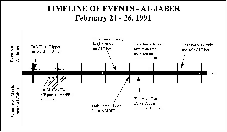
Figure 5. Timeline of Events for February 24-26, 1991.
Continued Attempts to Take Al Jaber
Task Force Grizzly was given the task of clearing the enemy from the base on the 25th. The attack began at 1600 hours and, by the morning of February 26, (Figure 5) Task Force Grizzly occupied or controlled most of the base. Most of the Iraqi defenders gave up, but resistance continued on February 25, particularly from long-range artillery north of the base. The ensuing artillery battle between the Marines and the Iraqi III Corps produced more Coalition force casualties (none chemical) than any other single engagement of the war. This heightened the tension and combined with the previous intelligence about possible chemical attacks added to cause for concern over Iraqi use of chemicals. At one point, the Task Force Grizzly Commander requested permission to use riot control agents ("tear gas") to subdue the remaining base defenders, but this request was denied by higher authorities out of concern that the Iraqis might retaliate with chemical weapons.[31]
As the fighting continued, Task Force Ripper heard from the Iraqi prisoners that an Iraqi counterattack would come "out of the flames."[32] The Task Force Ripper command thought this meant that a counterattack would be coming from out of the smoke of the burning oil fields. Task Force Ripper established a defensive mobile screening force north of the air base to prepare for the anticipated counterattack. The Iraqi attack never developed, but Marines were still anticipating an attack when a chemical alert occurred.[33]
The 1800 Hours Alert on February 25th
At 1800 hours, Task Force Ripper was alerted to a possible gas attack and went to MOPP-4 (Figure 6). The Task Force Ripper NBC Officer was careful to record "went to MOPP-4" and not "gas attack," as he had no confirmation of a chemical weapons attack. It is possible that the initial radio announcements declared a gas attack rather than a change in proscribed protective measures.[34] Consider, for instance, the way the 1st Combat Engineers Battalion reported the same alert:
1800 - Flash! Flash! Gas! Gas! 3d Tk Bn log train reports they
have been gassed. TF Ripper goes to MOPP 4.
1830 - All clear[35]
Figure 6. "Ripper" in MOPP-4[36]
The Task Force Ripper NBC Officer reemphasized reporting discipline throughout the Task Force, but for the first several days of the ground conflict, many suspected chemical attacks were reported as "confirmed attacks" over the radio nets. This left personnel in many units under the impression that actual chemical attacks had occurred and had been confirmed. Clearly, this is not the case as this was only a suspected attack and as will be described, cannot be confirmed by 3d Tank Battalion or anyone else.
The alert at 1800 hours was investigated as one of the seven events at Al Jaber, but it is currently unclear who the source of the alert was and where it occurred on the battlefield. Although the log quoted from above attributes it to the 3d Tank Battalion, no mention of the incident appears in the 3rd Tank Battalion’s logs.[37] Interviews of the 3d Tank Battalion Commander, the resupply officer (S-4), and NBC officer also failed to shed any light on the report. In fact, the NBC officer was quite emphatic, stating that the attribution of this report to 3d Tanks was incorrect.[38] The Task Force Ripper NBC Officer remembers the alert coming from the resupply convoy in the rear, approximately 20 miles behind the main body of the Task Force located at Al Jaber.[39] Investigators have been unable to locate anyone who recalls the specifics of this alert.[40]
Nevertheless, the 1800 hours alert was taken seriously and standard operating procedures were initiated: All affected units went to MOPP-4 and NBC personnel began checking for chemical agents. The Task Force Ripper NBC Officer recalls establishing an NBC "picket line" of two or three Marines several hundred yards upwind of the Task Force Command Post. These Marines used M256 kits to test the air for chemical agents. The tests took approximately 23 minutes to perform. All local monitoring by subordinate units resulted in negative tests—no agents detected. At that point (1830 hours), Task Force Ripper returned to MOPP-2[41] (Figure 7).
Figure 7. Timeline of Events—Fox Alert
| First Page | Prev Page | Next Page |